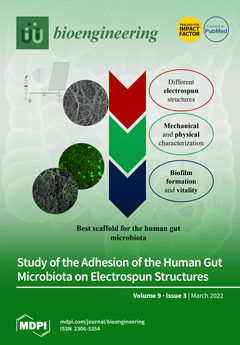Dental impressions are contaminated with potentially pathogenic microorganisms when they come into contact with patient blood, saliva, and plaque. Numerous disinfectants are used; however, no sole disinfectant can be designated as universal for all the impression materials. Thus, the aim of this study
[...] Read more.
Dental impressions are contaminated with potentially pathogenic microorganisms when they come into contact with patient blood, saliva, and plaque. Numerous disinfectants are used; however, no sole disinfectant can be designated as universal for all the impression materials. Thus, the aim of this study is to systemically review the literature to evaluate the effect of the existing disinfection procedures on the bacterial colonization of dental impression materials. This systematic review and meta-analysis was conducted according to the PRISMA statement. PubMed (MEDLINE), Web of Science, Scopus, EMBASE, and SciELO databases were screened up to April 2021. Eligibility criteria included in vitro studies reporting the antibacterial activity of disinfectant solutions in dental impression materials. The meta-analysis was performed using Review Manager (version 5.3.5). A global comparison was performed with the standardized mean difference based on random-effect models at a significance level of α = 0.05. A total of seven studies were included in the meta-analysis. The included studies described the effect of disinfection processes with chlorhexidine gluconate, alcohol, sodium hypochlorite, glutaraldehyde, and hydrogen peroxide in alginate, polyvinyl siloxane, and polyether impression materials. The meta-analyses showed that the use of chlorhexidine, alcohol, glutaraldehyde, and sodium hypochlorite reduced the colony-forming units by a milliliter (CFU/mL) in alginate (
p < 0.001). On the other hand, glutaraldehyde, sodium hypochlorite, and alcohol reduced the CFU/mL in polyvinyl siloxane (
p < 0.001). Finally, alcohol and glutaraldehyde reduced the CFU/mL in polyether material (
p < 0.001). High heterogenicity was observed for the alginate and polyvinyl siloxane materials (I
2 = 74%; I
2 = 90%). Based on these in vitro studies, the disinfection of impression materials with several disinfection agents reduces the CFU/mL count.
Full article






